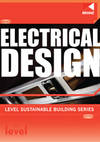Energy
Designing homes to conserve energy and use it efficiently, from sources that cause least environmental harm.
Electrical design
Electrical design is subject to a range of statutory and regulatory requirements aimed at ensuring performance and safety.
Power, communication and audiovisual requirements in buildings have changed rapidly in recent times and are likely to continue to do so.
By trying to anticipate future demands and planning for future access to key areas, building energy efficiency and sustainability can be ensured. Examples of planning include installing cableways, additional conduits or draw wires to roof, wall and underfloor spaces during construction or renovation and specifying trunking systems for solid construction to facilitate future changes.
AS/NZS 3000:2018 Electrical Installations (known as the Australian/New Zealand Wiring Rules) specifies the electrical installation safety requirements for all premises in New Zealand and Australia.
The Electricity (Safety) Regulations 2010 still cite AS/NZS 3000:2007 (including Amendments 1 and 2). This means the 2007 standard must still be used to ensure compliance with the Regulations, until the Regulations are updated to cite the 2018 edition.
Certain types of electrical work may only be carried out by licensed electrical workers, who also certify their work by supplying a Certificate of Compliance. You can check that an electrical worker is licensed on the Electrical Workers Register.
Updated: 08 September 2022


